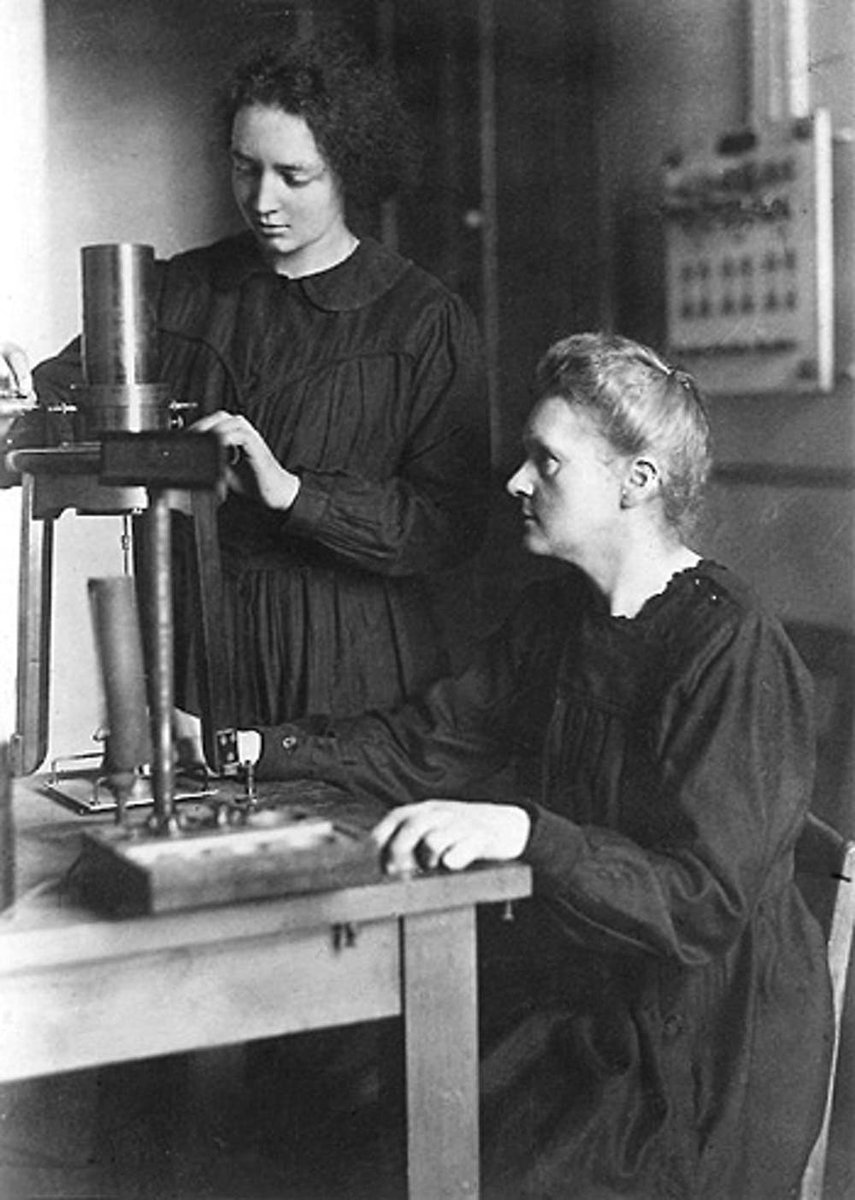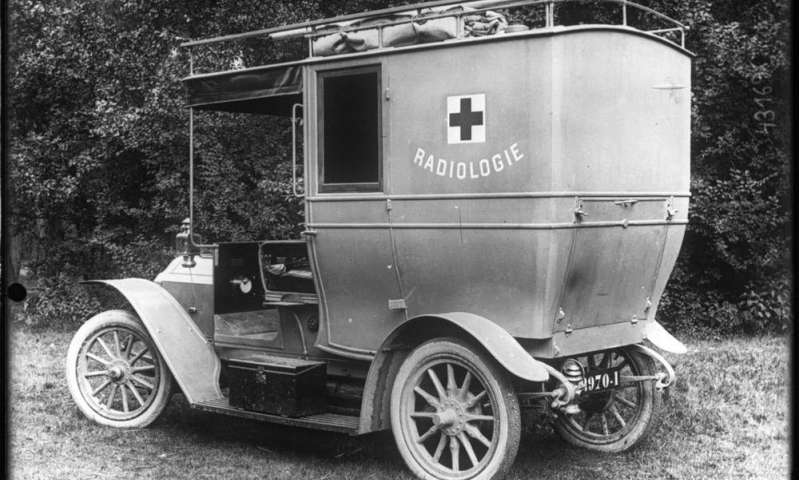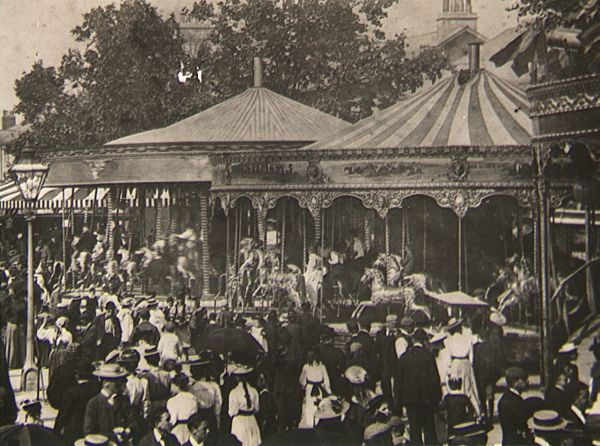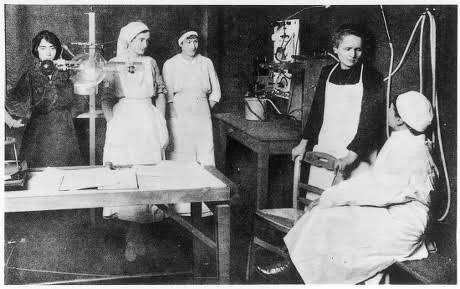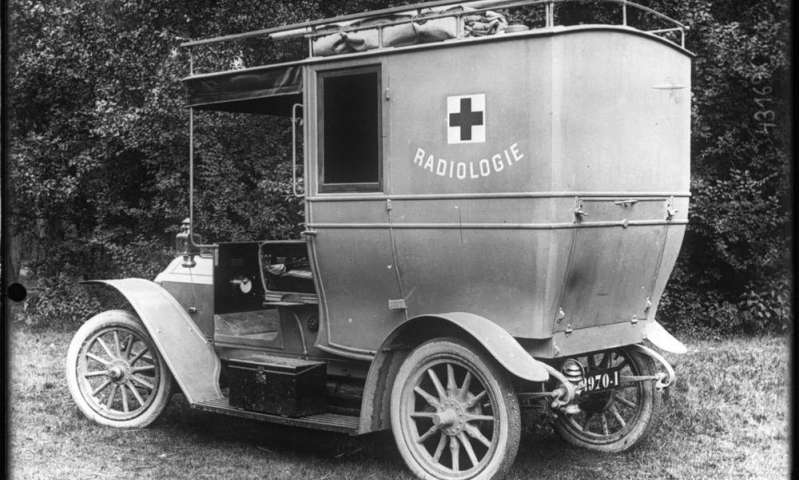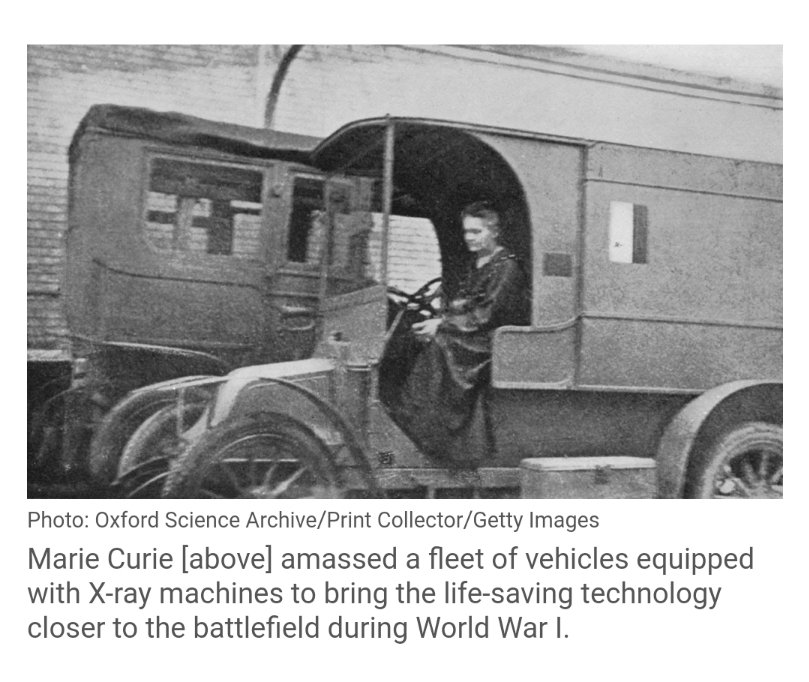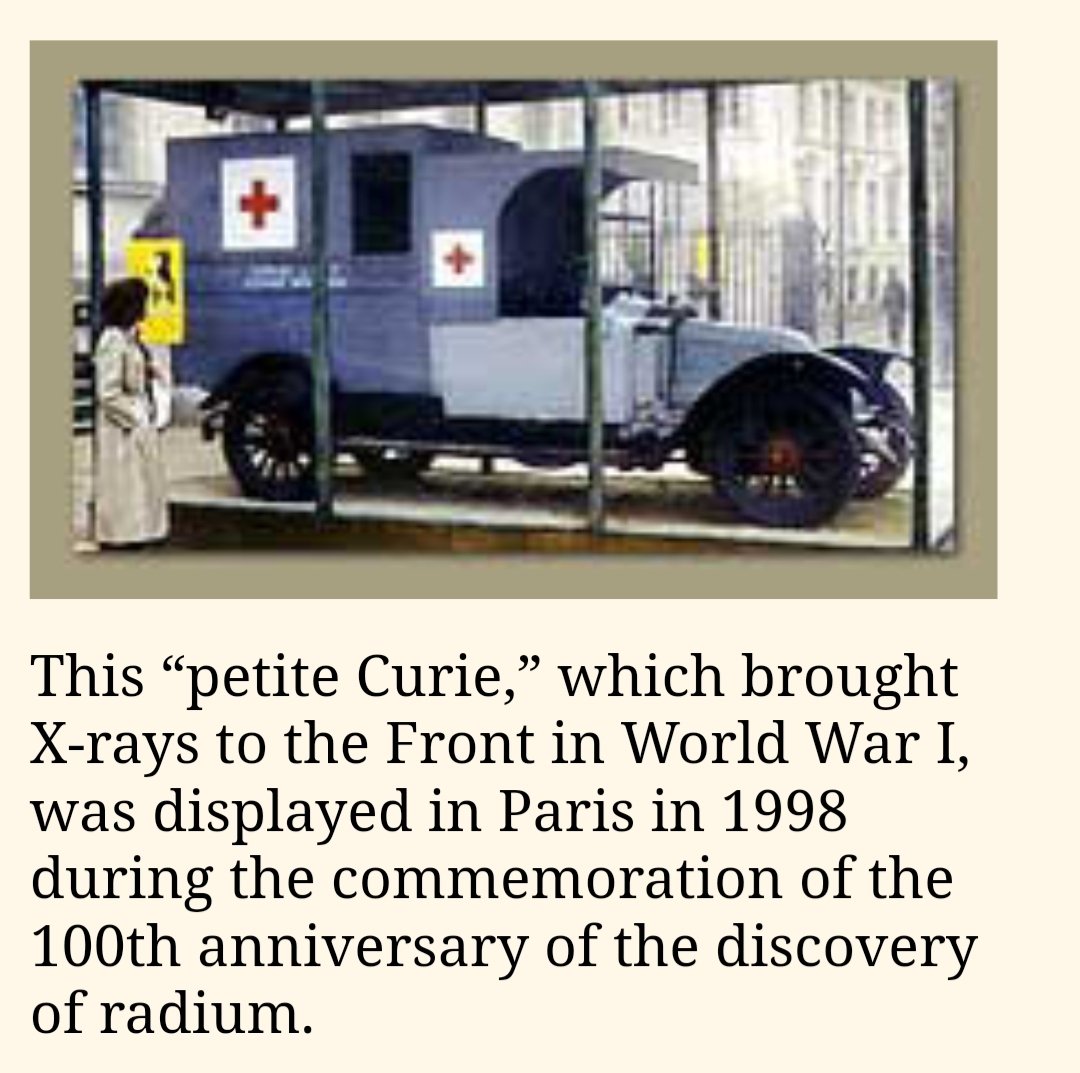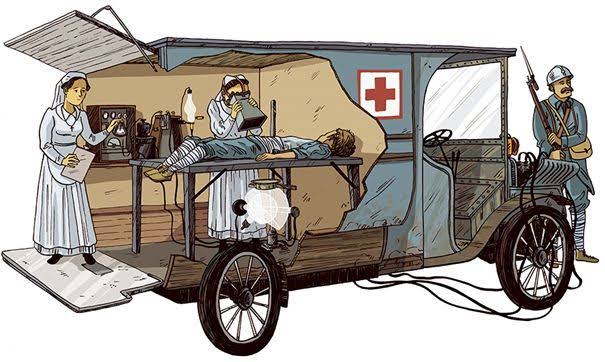Today& #39;s #CBG_Thread
How a woman physicist changed the way fractures were diagnosed and treated in medical world, saving lives of hundreds of soldiers in WW1.
And no she didn& #39;t invent X-Rays.
But she did win 2 Nobel prizes.
Marie Curie and her x-traordinary tryst with X-Rays.
How a woman physicist changed the way fractures were diagnosed and treated in medical world, saving lives of hundreds of soldiers in WW1.
And no she didn& #39;t invent X-Rays.
But she did win 2 Nobel prizes.
Marie Curie and her x-traordinary tryst with X-Rays.
Although X-Rays were discovered in 1896 by Roentgen, their use in medicine was still to catch up. They remained a source of entertainment and curiosity for a while. They were used in amusement parks for fun, for people to see the images of their bones.
Before the invention of X-Rays physicians practically had to "hammer" the patient down to figure out the location of fracture, bullets etc. This was slowly replaced in few hospitals with X Ray machines.
When WW1 broke out in 1914 Marie Curie was studying radioactivity in Paris (after the death of her husband). She had been rejected from Académie in Paris for being a woman (apparently Nobel prize didn& #39;t help). War put all her research on hold and she decided to pitch in.
One of major casualties of war in WW1 were broken limbs and bullets lodged deep in bodies. But X-Rays were limited to a few hospitals far away from battlefield.
Curie reached out to her wealthy friends to get them to donate vehicles. She then modified them into mobile X ray vans
Curie reached out to her wealthy friends to get them to donate vehicles. She then modified them into mobile X ray vans
These mobile Xray vans were called "Petite Curie" or little Curie. Curie modified the dynamo in these vans to generate electricity for operating X Ray machines inside them.
Curie then trained over 150 women to operate these vans and take X-Rays. This single handedly changed the recovery rates for injured soldiers in battlefield.

 Read on Twitter
Read on Twitter